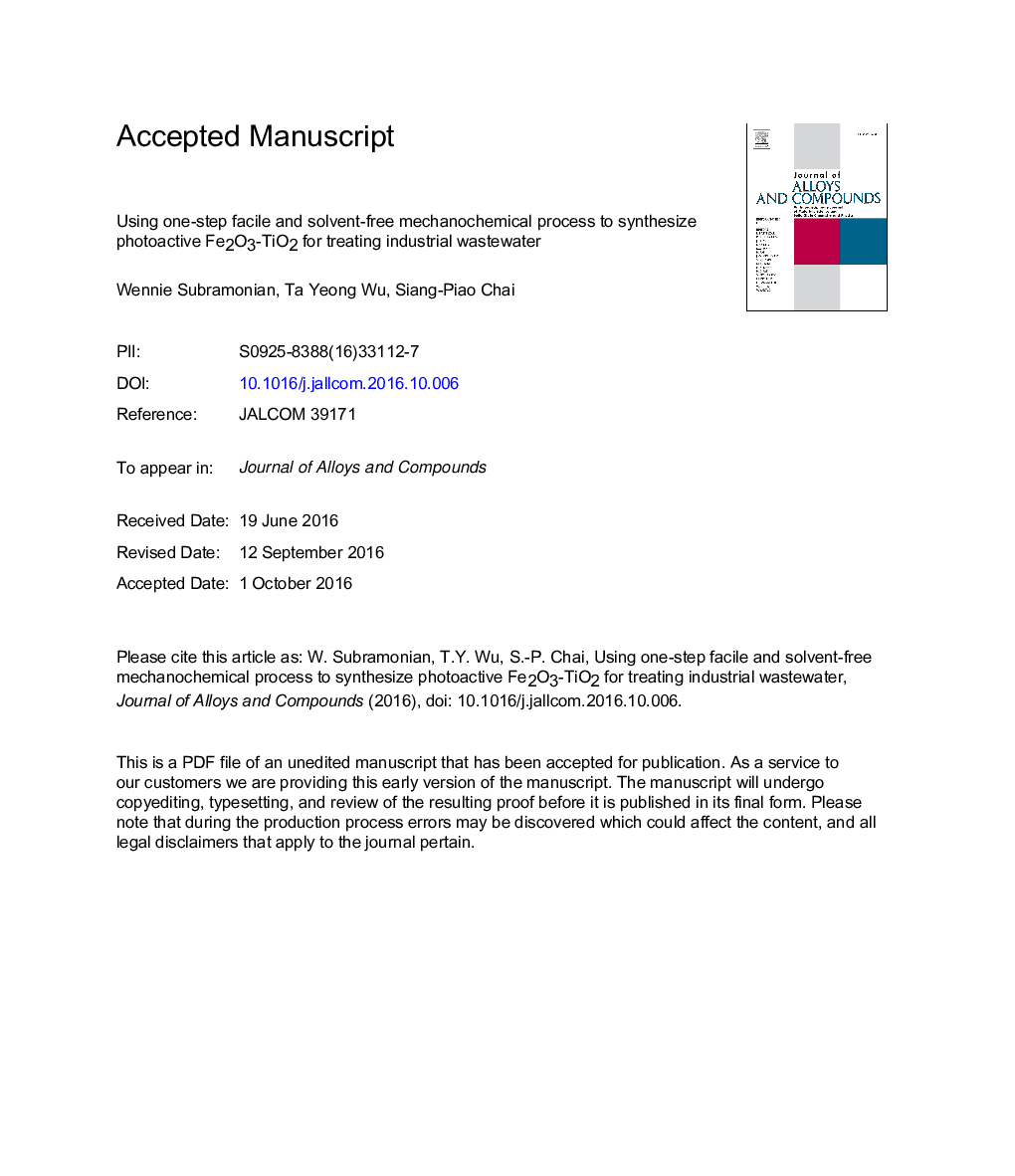| Article ID | Journal | Published Year | Pages | File Type |
|---|---|---|---|---|
| 5461425 | Journal of Alloys and Compounds | 2017 | 46 Pages |
Abstract
In this present study, Fe2O3-TiO2 photocatalyst was synthesized and used to degrade real industrial wastewater, namely pulp and paper mill effluent (PPME). Fe2O3-TiO2 was synthesized via ball milling at ambient conditions without incorporating any solvent. Comprehensive characterization studies and photocatalytic evaluations of the synthesized Fe2O3-TiO2 were conducted in this study. It was verified that Fe2O3-TiO2 possessed crystalline structures of γ-Fe2O3, anatase and rutile TiO2. Also, a good dispersion of Fe and O elements within the TiO2 framework was attained. A detection of FeOTi bond elucidated a substitution of Ti4+ by Fe3+ in the TiO2 lattice sites through mechanical milling, which ultimately enhanced the photocatalytic activities of Fe2O3-TiO2. Moreover, Fe2O3-TiO2 exhibited enhanced catalytic properties in terms of specific surface area (58.40 m2/g), band gap (2.95 eV), and charge separation in comparison with commercial P25. The present work also proved that both characteristics and photoactivity of Fe2O3-TiO2 were significantly affected by its synthesis conditions (milling time, milling speed, and Fe2O3 loading). The highest treatment efficiency of PPME (62.3% of chemical oxygen demand or COD removal) was achieved using Fe2O3-TiO2, which was synthesized at 20 min, 250 rpm and 1 mol% of milling time, milling speed, and Fe2O3 loading, respectively. Noticeably, the photoactivity of the Fe2O3-TiO2 was more superior to P25 (40.6% of COD removal). This study proved that mechanochemical process enabled the green synthesis of Fe2O3-TiO2 that could be used in the treatment of real industrial wastewater.
Keywords
Related Topics
Physical Sciences and Engineering
Materials Science
Metals and Alloys
Authors
Wennie Subramonian, Ta Yeong Wu, Siang-Piao Chai,
